Zero Emission Buses
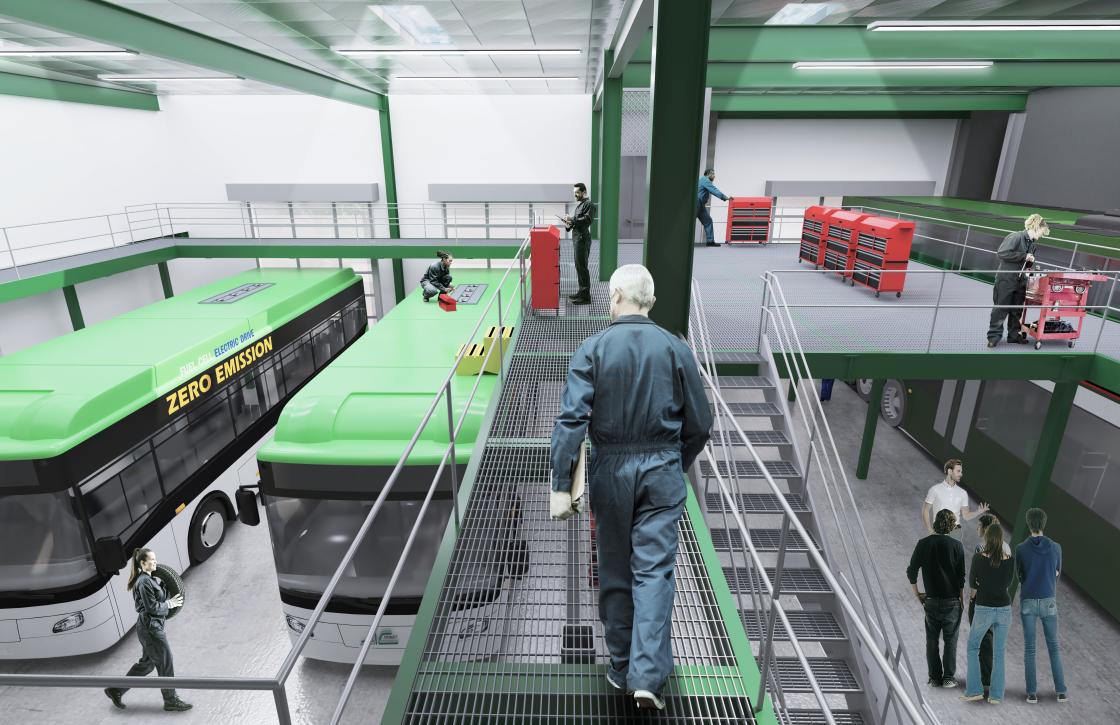
AC Transit Receives $25.5MM Through Coveted FTA Grant Award
We’ve been awarded $25.5 million from the prestigious 2023 Federal Transit Administration’s Bus and Low-and No-Emission Grant Awards! This coveted award will allow us to acquire 25 cutting-edge hydrogen fuel cell electric buses, replacing traditional diesel engines and accelerating us toward CA's requirement to be fully zero emission by 2040.
The Future of Transit: AC Transit’s Zero Emission Bus Fleet
AC Transit is investing in our planet and the future by leading the fight against climate change. Since 1999, AC Transit has been committed to exploring conversion to zero emission technologies—first with hydrogen and now battery-powered buses. AC Transit is moving from vision to reality and is actively converting one of the largest bus fleets in California to 100% clean fuels. By the end of 2023, 10% of AC Transit’s fleet will be zero emission clean air buses. By 2040, 100% of AC Transit’s fleet will be zero emission buses. Learn how we are moving to a 100% zero emission fleet. This transition gets us closer to achieving climate change goals while improving the air you and your family breathe every day.

Benefits
- Jobs: ZEBs bring good paying green jobs to our community.
- Better Ride: Compared to diesel technology, ZEBs reduce fatigue because of reduced noise and vibration. It’s smoother for riders too!
- Quieter: ZEBs are quiet and reduce ambient noise while traveling through the East Bay’s residential neighborhoods.
- Cleaner: ZEBs are proven to be an effective way for communities to reduce their carbon footprint. They have no tailpipe emissions—adios diesel exhaust gases!
- Healthier: ZEBs bring cleaner air to our communities, reducing particulate matter concentrations that can result in increased asthma rates and other negative health impacts.
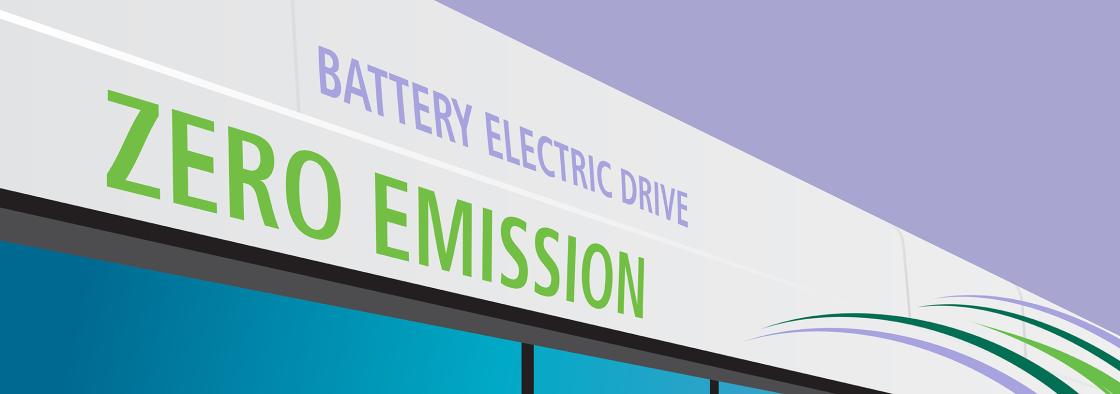
Zero Emission Buses on the Road
- Our Zero Emission Bus (ZEB) program generated over 6.5 million miles and eliminated more than 15,025 metric tons of CO2.
- 58 ZEBs: 30 Hydrogen Fuel Cell Electric and 28 Battery Electric - Buses.
- Oakland: vapor compression hydrogen station, with 9,000 gal hydrogen storage tank.
- Six 62.5kW battery chargers.
- Emeryville: liquid compression hydrogen station with 15,000 gal hydrogen storage tank.
- ZEB CO2 reduction in various greenhouse gas equivalents:
- 23,841 Gallons of gasoline consumed
- 234,379 Pounds of coal burned
- 492.7 Barrels of oil consumed
- 41.23 Homes’ electricity use for one year
- 2.805 Tanker trucks worth of gasoline
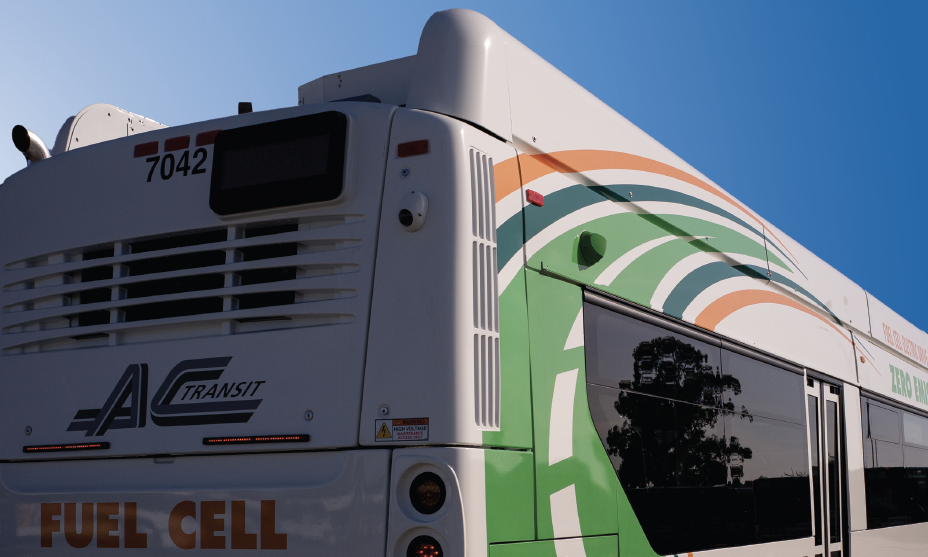
Capital and Operating Progress Report
The Capital and Operating Progress Report expands the evaluation of the Zero Emission Bus (ZEB) technologies beyond the initial 5X5 control fleet and includes the District’s ZEB Program capital investment since inception and the financial forecast needed to deliver the full fleet transition.
2040 Zero Emission Goal
In 2019, the California Air Resources Board (CARB) passed the Innovative Clean Transit Regulation, requiring all public transit agencies to transition to zero emission technologies by 2040. AC Transit is leading the way to a zero emission future by utilizing both battery electric and hydrogen fuel cell technology as we expand our fleet of zero emission buses. Learn how we are moving to a 100% zero emission fleet by 2040.
Zero Emission Transit Bus Technology Analysis
In collaboration with Stanford University's Precourt Institute for Energy, AC Transit developed our groundbreaking Zero Emission Transit Bus Technology Analysis (ZETBTA). These reports represent meaningful analysis of the various bus technologies which AC Transit operates. This analysis is the first ever true, side-by-side evaluation of zero emission bus technologies operated by the same agency, in the same service environment, with ZEBs from the same bus manufacturer, and compared to conventional fleets.
Read the report to learn:
- How AC Transit has updated the ZEB Transition Plan to meet the requirements set forth in the Bipartisan Infrastructure Law
- How AC Transit’s workforce has achieved over 25,000 hours of instruction on ZEB technology and is moving forward with testing virtual and augmented reality to further enhance training
- How each of the four volumes of the study compare, summarizing the past two years of data, including fleet performance
Youth Innovation Challenge
AC Transit is proud to be a local sponsor of the 2024 Youth Innovation Challenge "Sustainable Mobility Career Awareness & Innovation Challenge" In conjunction with Introducing Youth to American Infrastructure (IYAI+). This year's participants focused on expanding on ZEB technology; this year's Innovation Challenge aims to increase awareness of 21st-century transportation careers amongst young people, focusing on the workforce, sustainability, and environmental effects.
Program highlights include:
- Behind-the scenes study of how AC Transit’s cutting-edge hydrogen fuel cell and battery electric bus fleet work.
- Conducted in-house and external interviews with subject matter experts on accelerating zero emission transition.
- Behind-the-scenes in depth conversation on AC Transit sustainability initiatives.
1. By what year is AC Transit set to be 100% zero emission?
A. 2050
B. 2045
C. 2043
D. 2040
2. What color top does most of our ZEBs have?
A. Blue
B. Green
C. White
D. Yellow
3. What percentage of emissions does our zero emission fleet produce?
A. 10%
B. 8%
C. 5%
D. 0%
4. What energy producing system is implemented on all our ZEBs?
A. Regenerative Braking
B. Solar Panels
C. Nuclear Charging
D. Arc Reactors
5. What can you "see" come out of the zero emission fuel cell bus tailpipes?
A. Oil
B. Battery Fluid
C. Water Vapor
D. Hydrogen
6. What is the byproduct when hydrogen (H2) reacts with oxygen (O2) in a fuel cell?
A. Water
B. Electricity
C. Both Water & Electricity
D. Nothing
Trivia Answers
1. D
The 2019 California Innovation Clean Transition Regulation requires all public transit agencies to transition to zero emission technologies by 2040.
2. B
Majority of AC Transit’s zero emission Bus tops (roofs) are green to help them distinguish from the rest of its current bus fleet.
3. D
AC Transit’s zero emission buses produce zero percent pollution, meaning there is nothing harmful coming out of all the zero emission buses. There are no tailpipe emissions – goodbye to diesel exhaust gases!
4. A
The conversion of a bus’s kinetic energy (or energy in motion) into chemical energy (or stored energy) is stored in the battery-powered electric vehicle battery and can be used as electricity to power the electric motor.
5. C
Yup, only water comes out of all the zero emission fuel cell buses.
6. C
Both water and electricity are produced when combining hydrogen and oxygen.

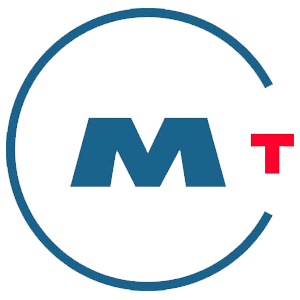
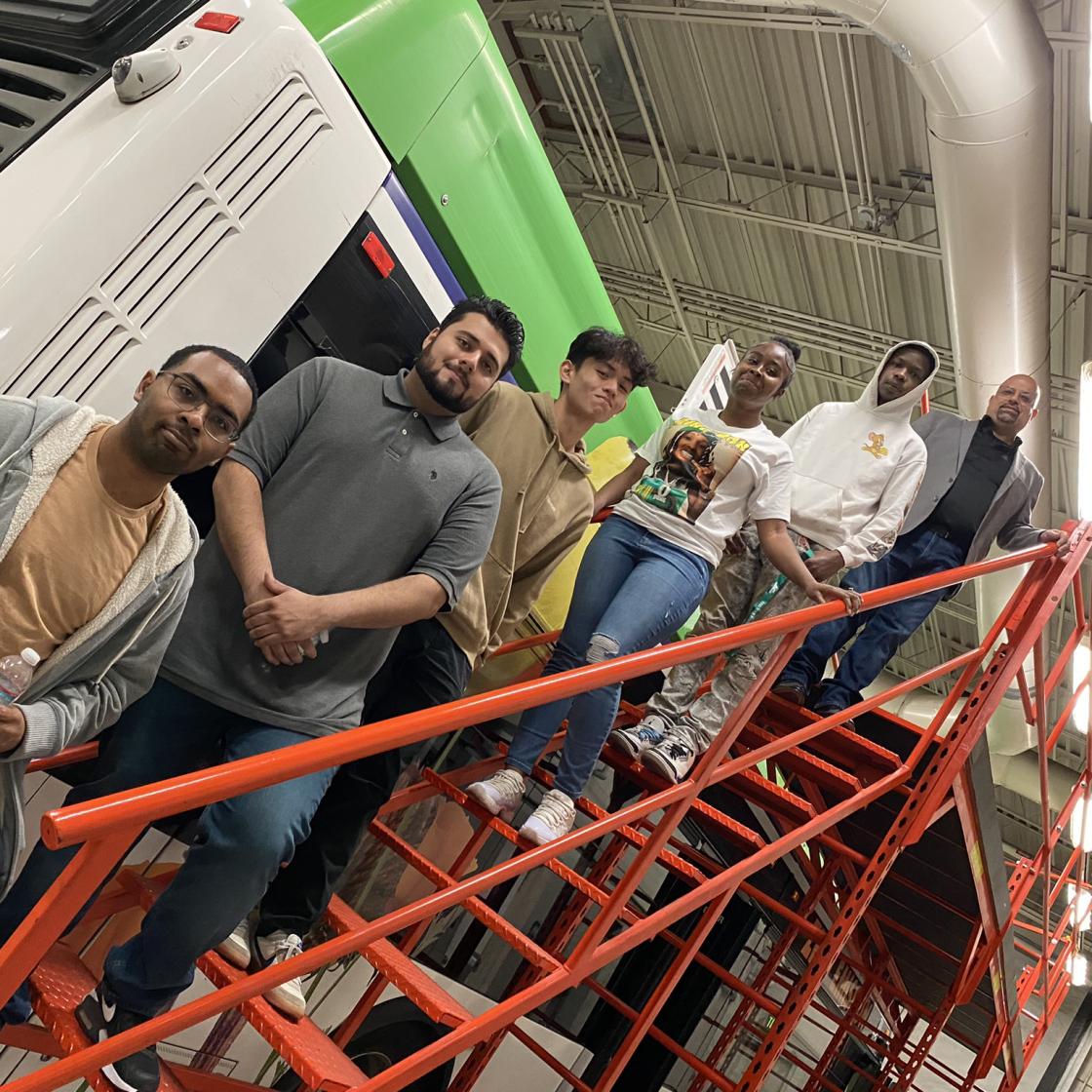
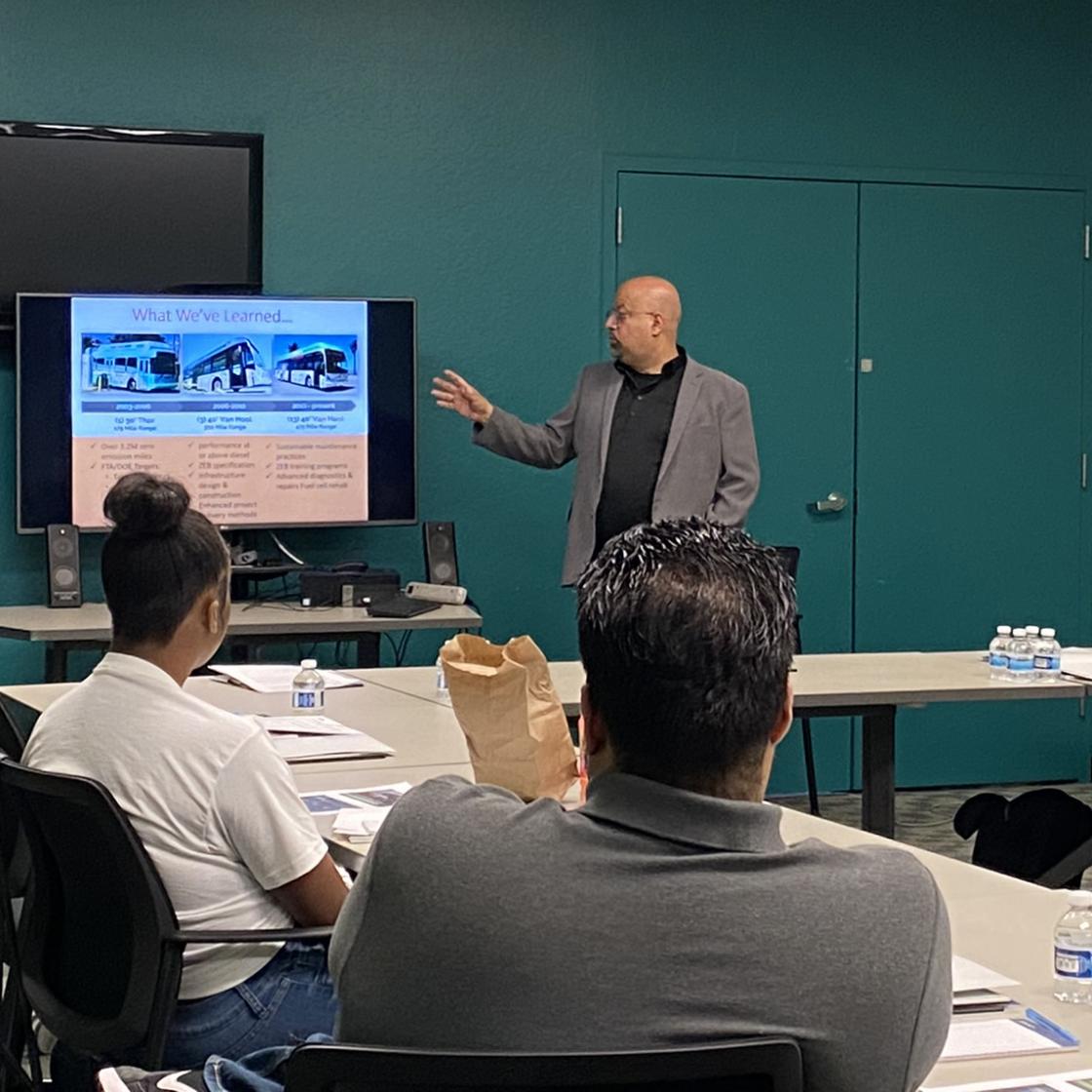
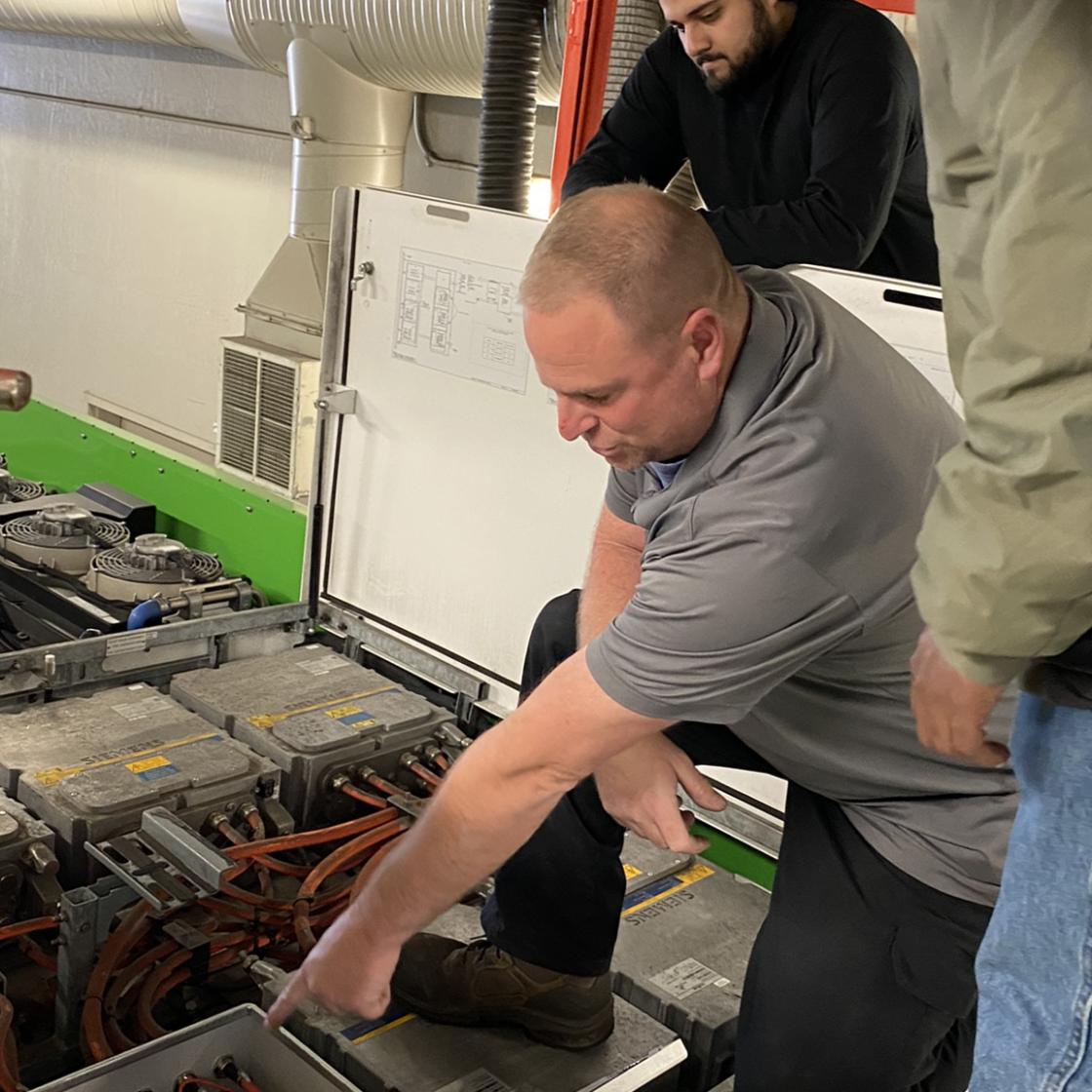
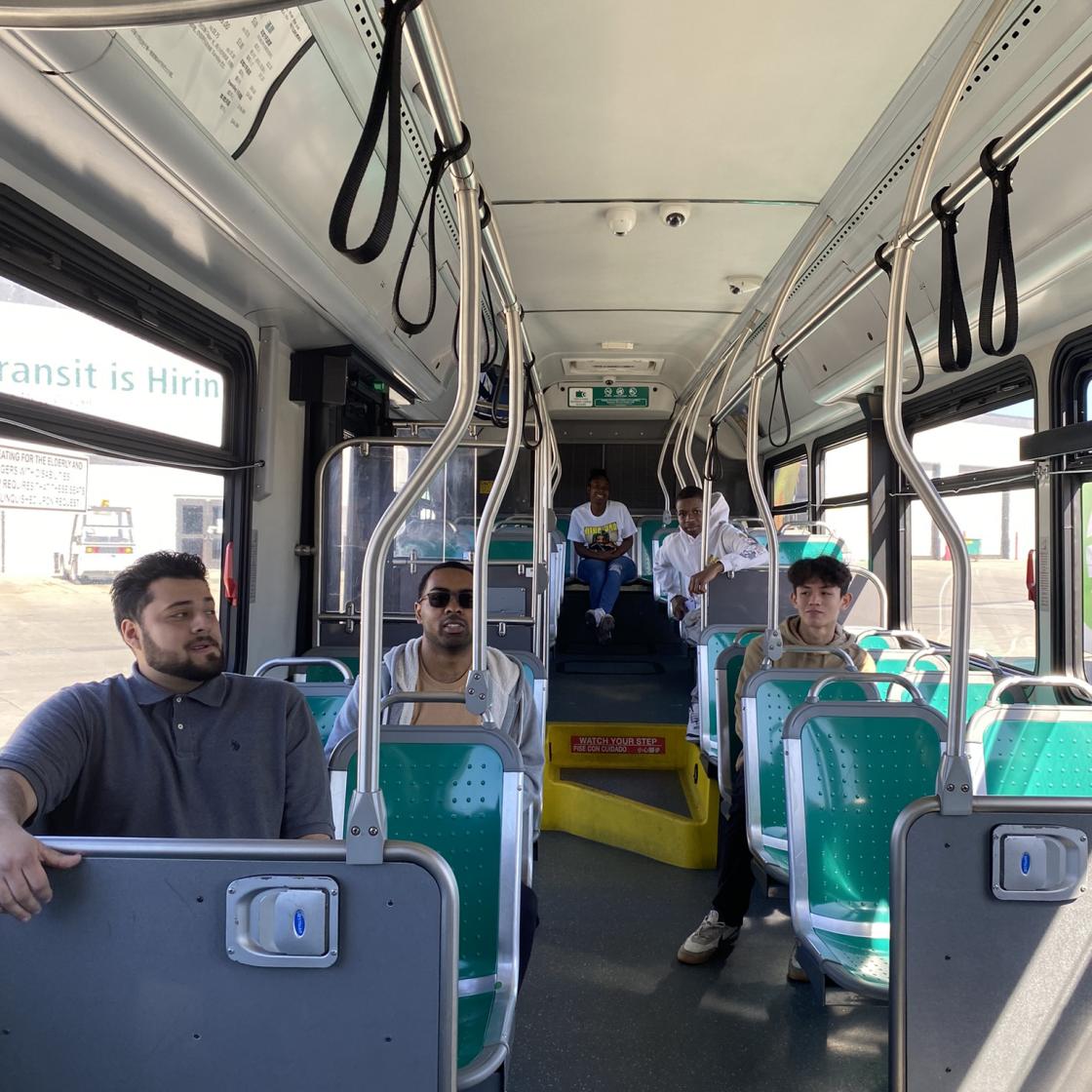
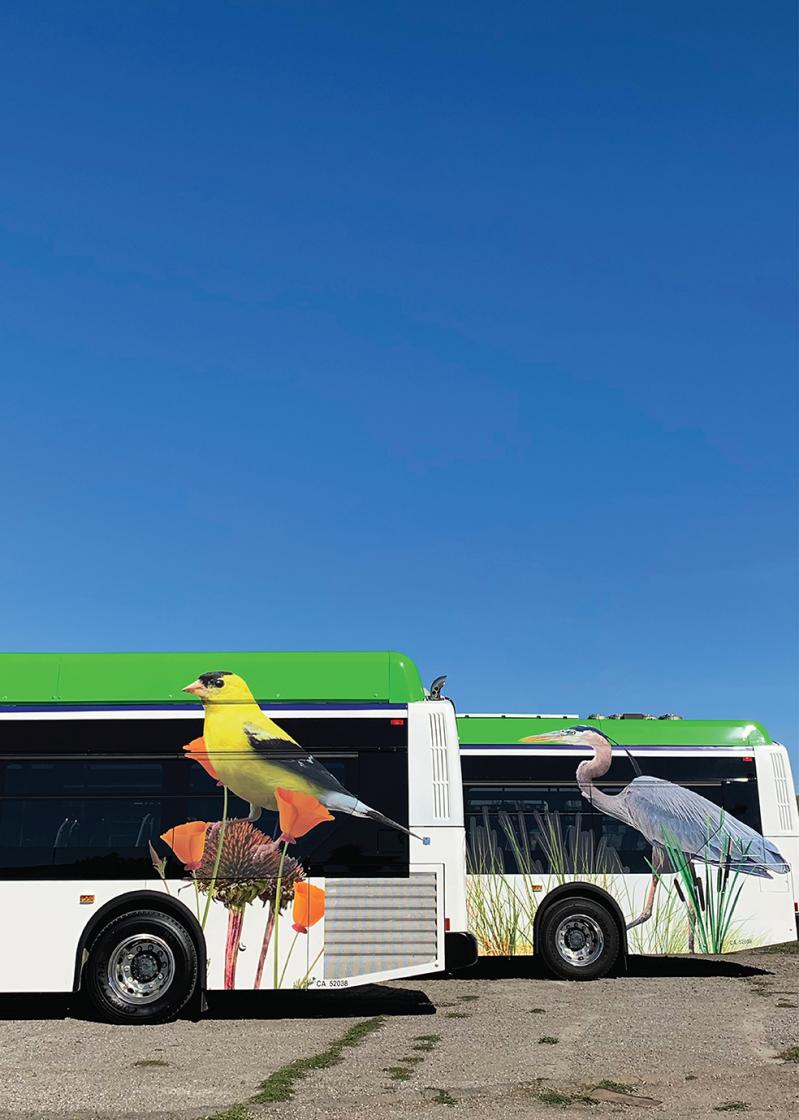
History of Leadership
AC Transit has a proud history of embracing environmental technology in our efforts to better serve our neighborhoods and has long been a recognized leader in this field, both nationally and internationally. Our first hydrogen fueling facility was opened in November of 2002 at our Richmond Division to operate a single 30-foot fuel cell electric bus. In 2006, we launched our first-generation fuel cell electric bus pilot program, operating three vehicles and a station out of our East Oakland Division. In 2010, we added 13 second-generation fuel cell electric buses to the fleet and opened a second hydrogen fueling station at our Emeryville Division. A solid oxide stationary fuel cell was added to our East Oakland Division in 2013. Then, the following year, we opened a new hydrogen fueling station on the site. In 2017, our fuel cell power plants surpassed the Department of Energy and Federal Transit Administration’s target numbers of 25,000 hours of operation.
Then in 2019, AC Transit embarked on a true side-by-side comparison—incorporating five battery electric buses and seven charging stations into our expanding fleet of ZEBs. We will be running hydrogen and battery electric vehicles in identical service to collect real-world performance data for comparison—and to determine which technology performs better to meet the needs of our service as we move towards a complete zero-emission fleet by 2040.
Funding
Funding for AC Transit’s Zero-Emission Bus program has come from various programs provided by the Federal Transit Administration and Department of Energy on the federal level, the California Air Resources Board, the California State Transportation Agency on the state level, and the Bay Area Air Quality Management District and Metropolitan Transportation Commission on the regional level. We are fortunate to have received significant funding to purchase zero-emission buses as well as design and construct hydrogen fueling stations and battery charging infrastructure to power the buses. The grants have enabled us to establish our Zero Emission Bus program and set us firmly on the path towards our goal of having a fully zero emission fleet by 2040.